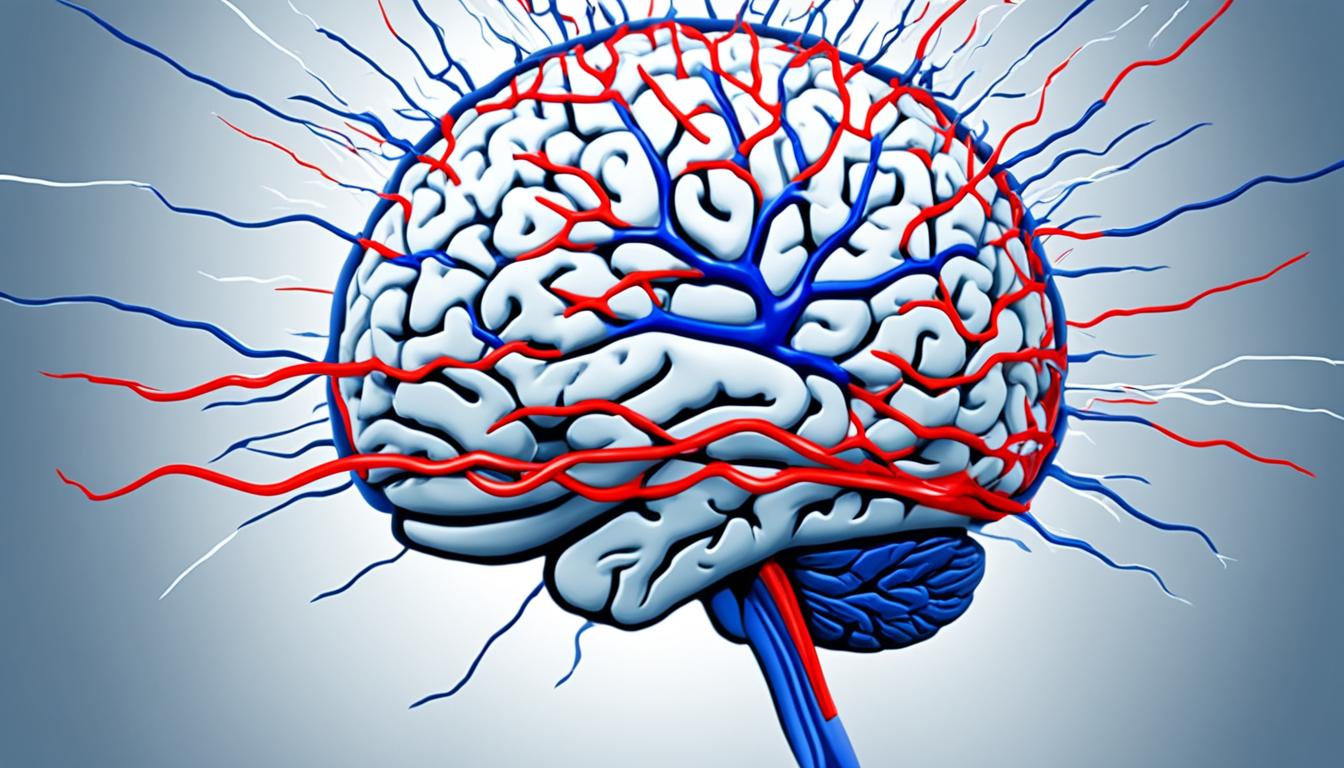Traumatic brain injury (TBI) happens after a hard hit or strong blow to the head. It can lead to both short-term and long-term harm to the brain. This harm often causes a mix of physical and mental symptoms.
Lighter cases of TBI might show up as simple as headaches, feeling sick, being dizzy, or having trouble thinking. On the other hand, heavier cases can lead to problems like passing out, having seizures, or struggling to move right. Such injuries often occur from falls, car accidents, violent acts, playing sports, or being near blasts.
People who are more likely to get a TBI include kids, young adults, the elderly, and males in general. TBI can also bring about other serious health problems. These may include changes in awareness, seizures, getting sick more easily, or having a hard time with thinking or learning.
Treating TBI involves various forms of rehab and, lately, stem cell therapy has shown promise as well.
Key Takeaways:
- TBI is caused by a strong hit to the head or body, leading to brain damage.
- Less severe TBIs can cause headaches, nausea, dizziness, and trouble thinking, while more serious ones may cause blackouts or difficulty moving.
- Common causes of TBI are falls, car accidents, violent events, playing sports, or being near blasts.
- Groups with higher TBI risks are children, young adults, the elderly, and males.
- TBI complications can include changes in awareness, seizures, easier illness, and learning or thinking difficulties.
- Treatments for TBI include different rehab methods and new ones like stem cell therapy.
Symptoms and Diagnosis of TBI
Traumatic brain injury (TBI) can show many symptoms that affect how someone thinks and moves. A mild TBI might cause headaches, dizziness, and tiredness. It can also lead to trouble speaking and changing moods. In more severe cases, people might faint, throw up a lot, or have seizures. They might also feel weak in their hands and feet. For babies and kids, TBI might make them eat differently, be more grouchy, or lose interest in things they usually enjoy.
If someone hits their head, it’s important to see a doctor fast. This is because TBI can cause lasting problems. Doctors will look at the symptoms, person’s health history, and do a full brain check. They might also do special scans like CT and MRI to see how bad the brain damage is and to help with the diagnosis.
Common Symptoms of TBI:
- Headaches
- Dizziness
- Fatigue
- Speech problems
- Mood changes
- Loss of consciousness
- Repeated vomiting
- Convulsions
- Weakness in fingers and toes
Diagnosis of TBI:
Finding out if someone has a TBI involves several steps:
- Looking at the symptoms the person has
- Checking their medical history carefully
- Doing tests to check how well their brain and body work
- Using scans like CT and MRI to see inside the brain
All these steps help doctors figure out if it’s a TBI and how bad it is. Then, they can plan the best way to treat it.
Causes and Risk Factors of TBI
Traumatic brain injury (TBI) can happen from many things, like falls, car crashes, fights, sports hits, or blasts. Falls from heights or down stairs, and car crashes, are common. For kids, being shaken violently can cause TBI. Members of the military face more TBI risk from combat and blasts.
Some people are more at risk of a head injury, making TBI likely for them. Kids, young adults, older adults, and males fall into this group. They are more likely to get TBI from certain accidents and events.
It’s hard to stop every TBI, but we can take steps to lower the risk. Safety gear, like helmets for sports or work, is crucial. Good driving habits, such as using seat belts and staying focused, can help too. Educating about and stopping violence can also make places safer and lower TBI risks.
Stem Cell Therapy for TBI and Conclusion
Dealing with traumatic brain injury (TBI) is becoming more advanced with treatments like stem cell therapy. Studies show that neural stem cells might be able to fix the brain’s damaged areas. These cells can come from the person’s own body or from other sources.
By putting these stem cells into the hurt part of the brain, scientists hope to help it heal and work better. While this kind of therapy for TBI is still new, it brings hope for better outcomes and less long-term harm from TBI.
More research and testing are needed to know if stem cell therapy is really safe and effective for TBI. Using stem cells along with other treatments shows we need a mix of approaches to help TBI patients recover.
To wrap up, TBI is a tough problem that needs quick, careful treatment. Stem cell therapy is a new way that might help in the future. But, it’s important to be careful and keep learning about how to best treat TBI. With more study and better treatments, people with TBI can look forward to getting better and living a good life.

